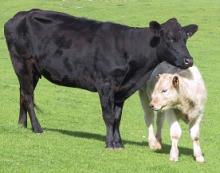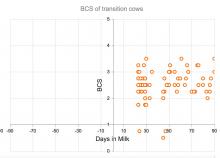We all know that excessive negative energy balance around calving causes problems - including poor fertility, LDAs and lameness.
Preventing this negative energy balance and the mobilisation of body fat reserves it causes, requires a multi-pronged approach.
Body condition scoring tends to rely on a lot of things going right; on most farms there is the potential for one or more parts of the jigsaw to change, often without really being noticed until suddenly a problem is apparent.
For ease, we have provided a link to two fact sheets, that focus on Infertility Problems in Dairy herds and Managing the Periparturient Cow. For further details, please refer to these fact sheets by clicking the links, or, talk to a member of the farm team.
The Importance of Monitoring the Transition Period
Routine monitoring allows problems with NEB to be detected early, before they cause bigger problems.
There are many options, but one of the simplest, yet most useful, is body condition scoring (BCS). However, BCS of cows on a single day gives you only limited information on what is happening, for example, we don’t know if the current group of dry cows is a good approximation of the previous group.
It’s much better to monitor the BCS of individual cows as they move through their lactation, but trying to do this with paper records is a bit of a nightmare, however, every time we enter any information on a cow onto Vet Impress (for example, at post natal check or PD) there is the option to enter a BCS.
So, if we BCS the dry cows at a routine visit, in a few weeks, when we have seen them again, we can start monitoring the change in body condition - see image.
Body Condition Score Targets, If cows are losing more than 0.5 BCS we know we need to review management.
If you would like to discuss this further, please call the practice and chat to our vets - 01363 77260




